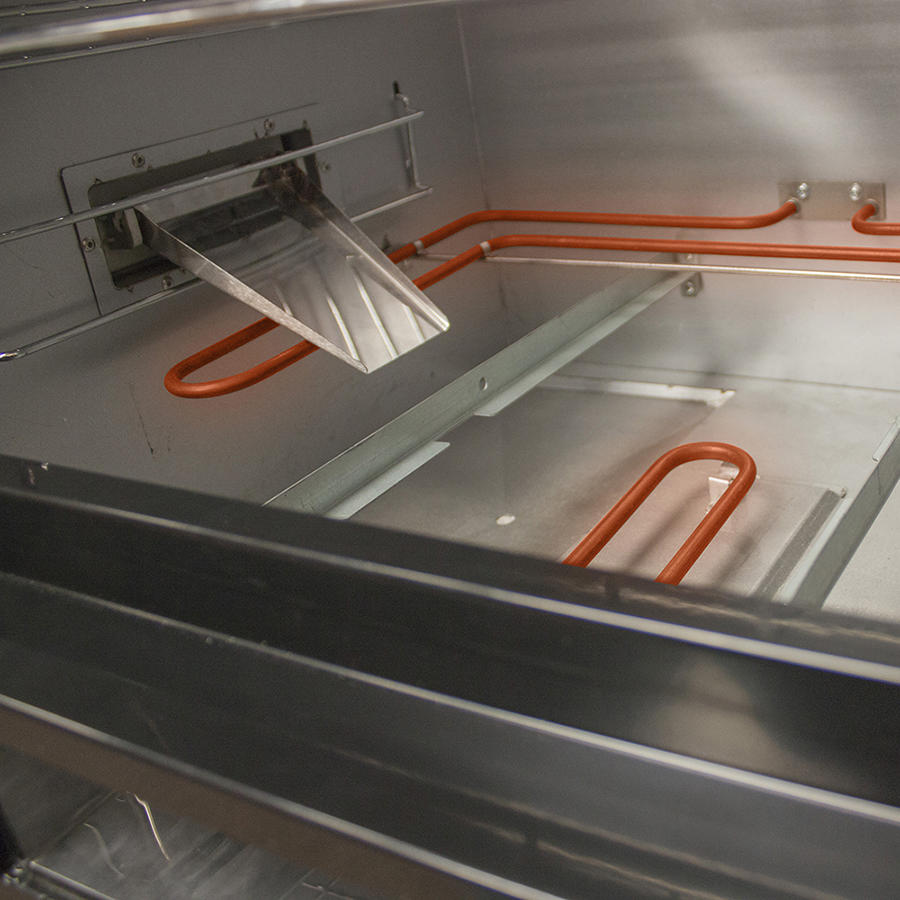I'm somewhat embarrassed to ask....but, what's a PID?
I was aware that it wouldn't hold temperature precisely.....but 20 degrees just seemed like a huge swing.
....sT
Don't ever put a data logger in most older home ovens! A plus and minus 10 degree F swing is actually quite good.
How does this unit generate its smoke? The MES units have a chip tray that gets heated by the main heating element. Thus, they are designed to cycle the temperature up and down so that during the relatively long "on" part of the cycle, the heating element is on long enough to get the chips smoldering. If you use a proportional control, the heating element is never fully hot once the smoker comes up to temperature. Thus, you get no smoke from the chips, pellets, or whatever. So the long time cycle of the heating system is a necessary part of the design.
A PID controller is a "proportional, Integral, differential" control that implements one of a variety of PID algorithms to control the power to the heater in an effort to provide precise, smooth, and very constant temperature regulation as well as smooth response to disturbances. There are some excellent tutorials on the subject on line if you want to learn more. But the important thing to understand is the proportional part of the technique.
The idea is that the amount of power going to the heater is proportional to the error between the setpoint and the actual temperature. So, for example, you might have the gain of the control set to give full power to the heater if the smoker is 5 degrees below the setpoint, and then taper the power back to zero as the temperature reaches the setpoint. Setting the gain higher, you might have full power at 2 degrees of error, etc. This is the proportional part of the algorithm.
And purely proportional control is actually quite good all by itself. But since the amount of power to the heater is dependent on the error, you can see that a purely proportional control must always have an error. The temperature in the smoker must always be at least a little lower than the setpoint. You could set the gain higher and higher, but at some point, the system will become unstable and oscillate, becoming no better than a simple on-off control, and perhaps worse.
That's where the integral part comes in. The integral part of the "formula" is used to eliminate this "standing error". The idea is that the algorithm looks at the standing error over a relatively long period of time, and develops a correction factor that tries to bring the temperature up to the setpoint.
The differential or derivative part of the algorithm attempts to calculate how fast the temperature is closing in on the setpoint so it can sort of put the brakes on things as the temperature approaches the setpoint in an attempt to prevent the temperature from overshooting the setpoint.
At least that's how one possible algorithm can work. The industrial controllers I use at work give you several different algorithms to choose from, and I do not pretend to fully appreciate all of the subtle differences. But some are better for some jobs. Some of the best standalone PID controllers I have ever used were based on "fuzzy logic", and learned their loops well in their auto tune modes. They were programmed in FORTH, a language that really lends itself to fuzzy logic. Sadly, those particular controllers are no longer available. They were almost magic. I once set up a system involving seven interacting subsystems, and all it took to tune the whole works was to let each controller learn its tuning, one by one, and it was tuned. It was ridiculously easy. A complex system that should have taken weeks of tedious trial and error to get tuned was working perfectly in an hour or less. The client thought I was a PID genius, but it had nothing to do with me! Those fuzzy logic controllers were uncanny!
Anyhow, the 20 degree swing is fine, and perhaps necessary, depending on the method used to generate smoke in these smokers. And a PID type control might well require you to use a separate smoke generator. (Not that that isn't a good idea)! A lot of us end up using separate smoke generators for a number of reasons.








